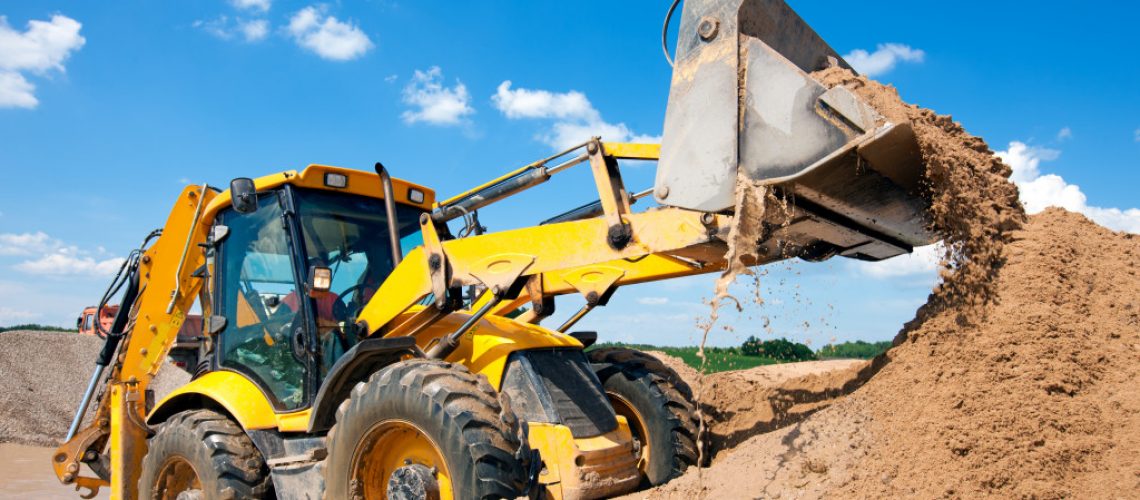Equipment is one of the biggest — if not the most — investments construction firms make. To deliver quality workmanship in a timely manner, they must keep their equipment fleet up to date and complete. However, equipment decisions were a lot easier to make when the flow of projects was steady and consistent. Now that we have an ongoing pandemic and workers are scarce, construction firms are in limbo.
If one piece of equipment is broken, the company can pay for its repairs. If the equipment is paid for, they can set it aside and rent a working one until the business stabilizes again. Another choice would be to buy used equipment, which can save money on repetitive repairs and brand-new equipment.
But how much usage is considered safe? If people usually are hesitant to buy a ten-year-old car, should construction firms also limit their options to slightly used equipment? Many types of machines start to show problems with time. In construction equipment, age-related problems could mean major safety risks for workers.
Factors that Affect an Equipment’s Safety
It’s unfair to assume that old construction equipment is automatically unsafe. Any machine can last for several years with proper maintenance, after all. However, construction equipment has more complex mechanisms than, say, HVAC systems and home appliances. It takes a lot more than cleaning to maintain heavy equipment.
That said, other than age, here are the factors that affect an equipment’s safety:
-
Temperature
When environmental temperatures fluctuate, the equipment could experience thermally-induced failure. In freezing temperatures, the fluids in the equipment may freeze, preventing the gears from turning. It could take a while for the ice to thaw, and the equipment becomes safe for use again.
Overheating is also a common cause of failure. Running equipment for long periods without rest strains its gears and other mechanisms. Therefore, schedule breaks between runs, whether the equipment is old or new.
-
Poor Maintenance
Failure to care for construction equipment can lead to mechanical malfunctions. The parts of the machine may get loose or worn out without the operator’s notice. Common types of such failures are old brake pads, hydraulic pump failure, misaligned tighteners, and gearbox issues.
Mechanical malfunctions are the easiest to fix and prevent. However, fixing it often requires new parts or total replacement. This puts some companies in a dilemma. They’d be torn between repairing or replacing. If they’re in haste, they may rush to buy or rent used equipment.
-
Unpredictable Circumstances
Some machines will randomly fail, despite preventative maintenance efforts. This is called an erratic failure. It can be sudden, intermittent, or gradual. Sporadic failures are much less likely in new equipment and possibly more likely in used equipment. Hence, if companies would buy or rent used equipment, they must review its history first. They should find out its failure patterns if malfunctions have happened more than once. This will allow them to account for these scenarios while planning a project.
Repairs vs. Replacement

If old equipment requires repairs, the costs for those will reduce a company’s working capital, thus also reducing their net income. They can finance the repairs to avoid taking a chunk of their finances. Repairing old equipment will allow operators to prolong its life and continue to work with it, instead of taking on a new financial obligation, which is brand-new equipment.
But if old equipment incurs a number of major repairs, a company may eventually run out of finances to cover its costs. This will further slim down their profit margin.
Replacement, on the other hand, will incur a costly upfront. Its maintenance costs will likely be the same as its predecessor or even cheaper since new machines are often easier to maintain. If a company buys used equipment, maintenance costs will more or less be the same as the old one. But it faces the risks of malfunction.
Prolonging Equipment Life
To avoid frequent malfunctions and costly repairs, companies can focus on extending the useful life of their existing fleet. Aside from conducting preventative maintenance, companies can consider investing in aftermarket parts for construction equipment.
Modifying the exhaust systems, brakes, and other components can prevent unnecessary expenditure in the future. Operators should also prevent ash, dirt, and dust buildup in their machines. Letting them accumulate can cause debris to get stuck in gears, leading to overheating or total failure.
More importantly, equipment operators should be well-trained. Many cases of equipment failure could’ve been avoided if operators had a profound understanding of the machine.
With excellent maintenance, periodical modifications, and well-trained operators, old equipment can stay functional and safe. The only time they’d become a danger is when their operators have stopped caring for them.

